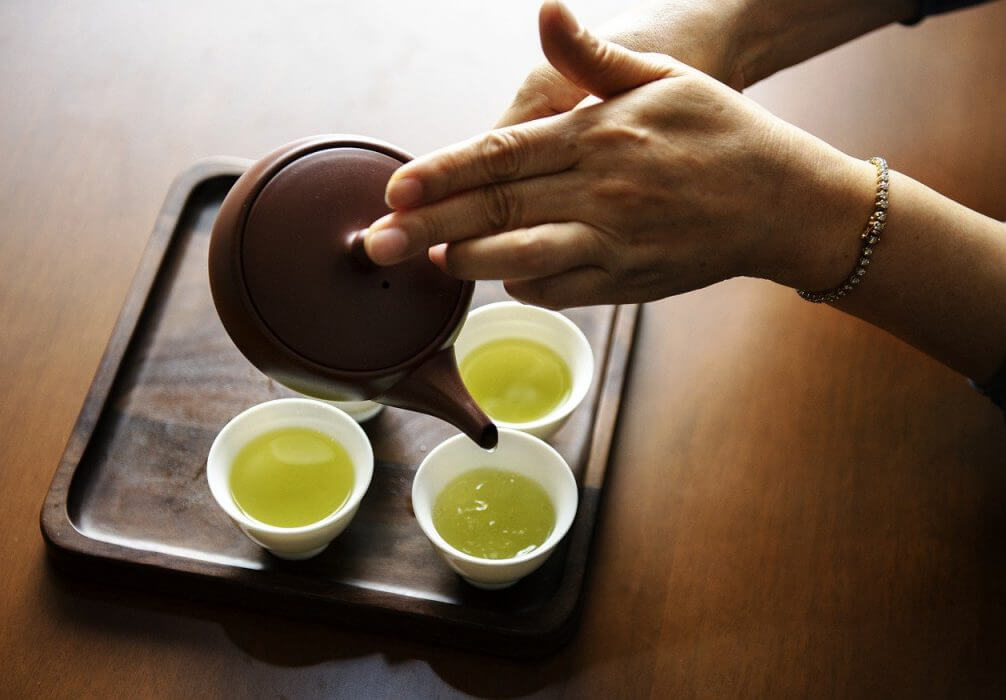Brief History of Japanese Green Tea
Japanese green tea is a cherished element of Japan’s cultural and historical heritage. This extraordinary beverage, celebrated for its exquisite flavor and numerous health benefits has a long and colorful history that goes back more than a thousand years. Let’s examine the intriguing beginnings and cultural relevance of Japanese green tea.
History of Japanese Green Tea
The ninth century marked the history of Japanese green tea. Japan received tea seeds from Buddhist monks who had returned from China. Originally, these seeds were sown throughout the Kansai region (Western Japan), which includes the environs of Kyoto and Nara. Tea was prized by the monks for its therapeutic qualities and capacity to facilitate meditation.
During the initial phases, tea was not commonly drunk. Monks and members of the upper class were the main consumers. In order to produce green tea, the tea leaves were first steamed and then ground into a powder, which is how Matcha was first made. This process kept the health benefits and vivid green color of the tea intact.
The Contribution of Eisai
Green tea gained prominence in Japan in the late 12th century primarily due to the endeavors of a Zen Buddhist monk named Eisai. Eisai visited China to investigate the advantages of tea cultivation Upon his return, he brought back tea seedlings and the expertise required to cultivate and brew the tea.
By planting tea seeds in Kyoto, Eisai made a significant contribution to the proliferation of green tea in Japan. In 1211, he authored the first Japanese book on tea, “Kissa Yojoki” (The Book of Tea), in which he promoted tea drinking and extolled its health advantages. Eisai’s efforts elevated the status of green tea within Japanese society.
The Emergence of the Tea Ceremony
The “chanoyu,” or Japanese tea ceremony, traces its origins to the Muromachi period (1336–1573). This ritualized method of tea preparation and consumption was profoundly shaped by Zen Buddhism, which emphasized mindfulness, simplicity, and an appreciation for nature.
The inception of the modern tea ceremony is attributed to Sen no Rikyū, a renowned tea master from the 16th century. He established the ideas of “wabi-sabi,” which celebrate impermanence, simplicity, and imperfection. The tea ceremony that is performed today continues to be profoundly influenced by the teachings and philosophy of Sen no Rikyū.
The tea ceremony emerged as a cultural symbol of peace, harmony, respect and tranquility. It serves as a meditative practice that fosters a deeper connection between the host and guests, embodying the essence of refined elegance and serene contemplation.
Kyoto Beverages: Get Premium Japanese Green Tea
Kyoto Beverages offers an exquisite selection of high-quality teas for enthusiasts and newcomers alike, eager to explore the world of Japanese green tea. Sourced directly from Japan’s traditional green tea farms, our products embody the highest standards of authenticity and excellence. Honoring centuries-old customs, we present a diverse array of Japanese green teas, including Sencha, Matcha, Fukamushicha, Gyokuro and Genmaicha. Our teas are perfect for both daily enjoyment and traditional tea ceremonies, reflecting the rich heritage and therapeutic benefits of Japanese green tea.
From its origins in Buddhist monasteries to its esteemed place in modern Japanese culture, the history of Japanese green tea is a testament to its enduring cultural and medicinal significance. With our premium teas, you can savor this legacy and appreciate the unparalleled quality and tradition with each sip .




































